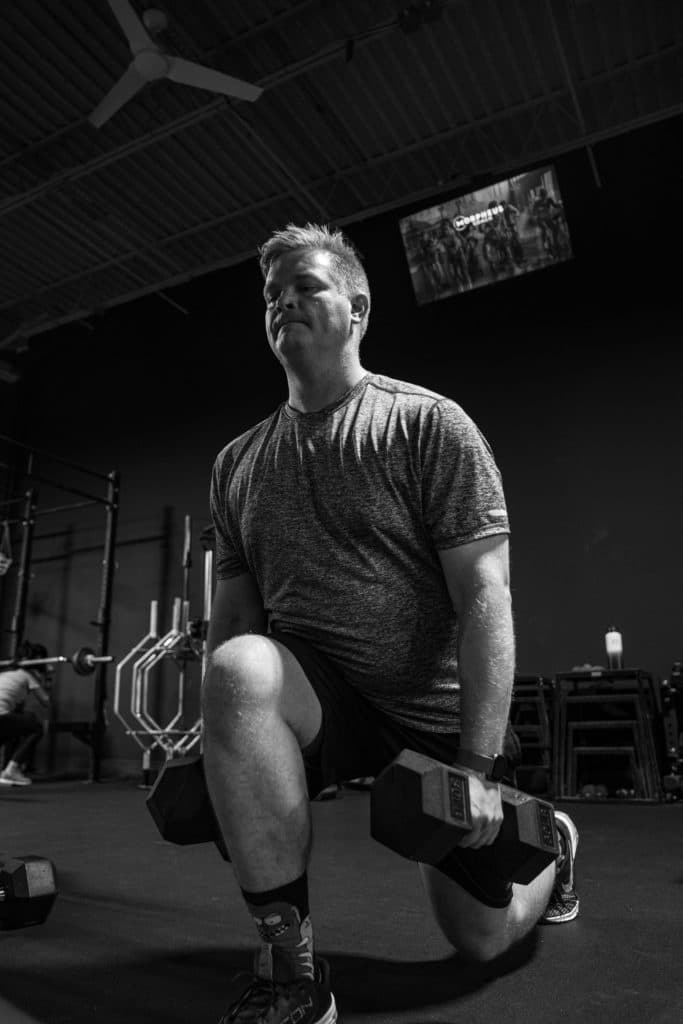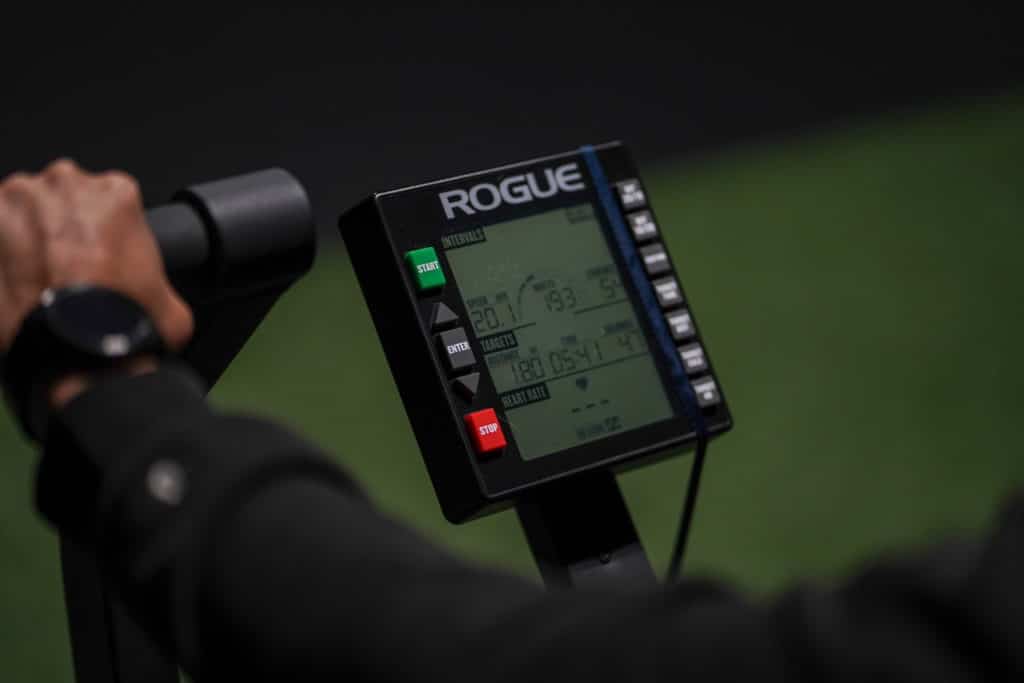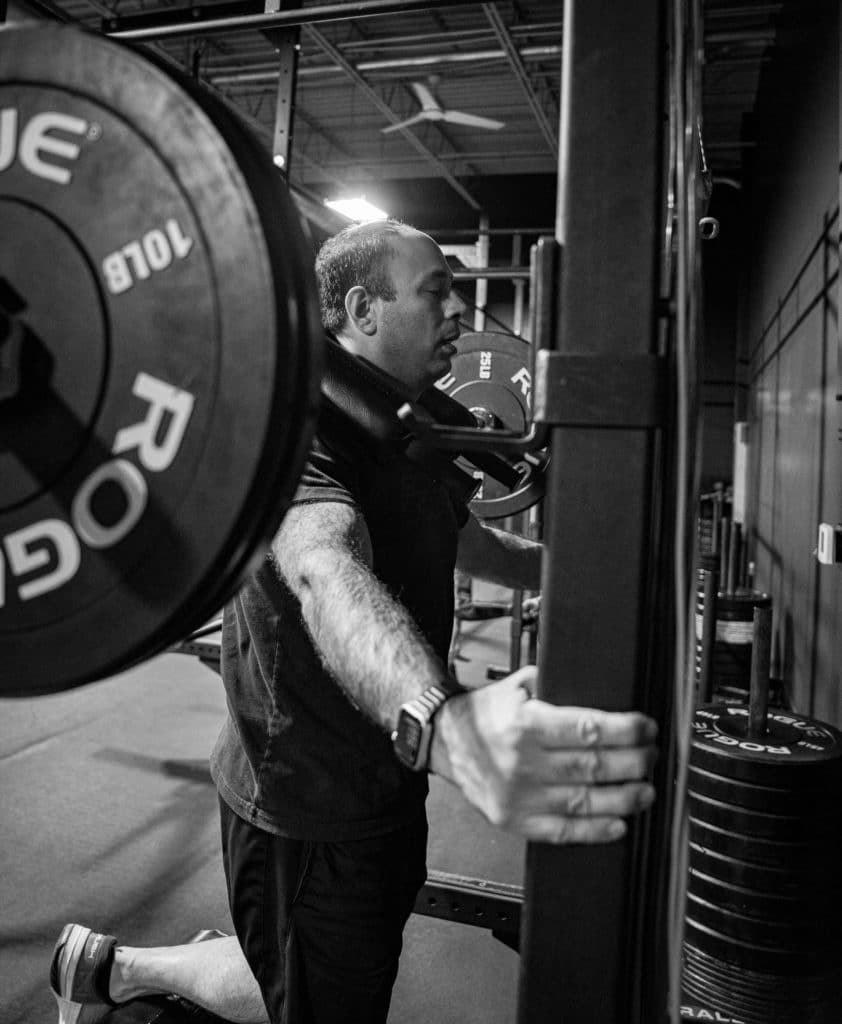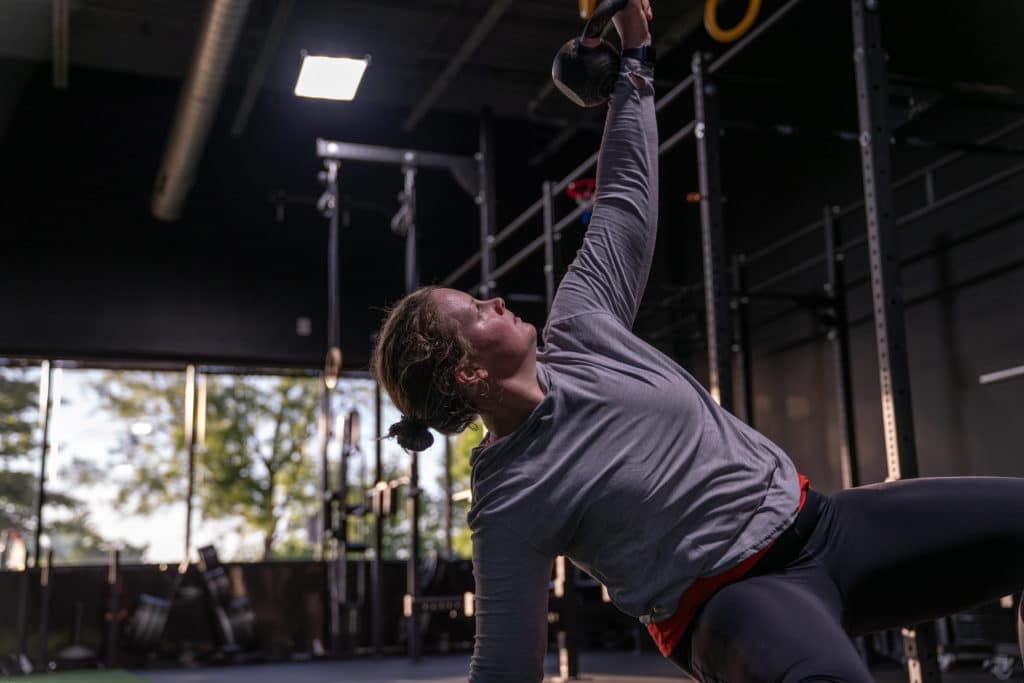This edition of the Why You’re Doing What You’re Doing Program Blog marks one year since we started the series. These days we share them privately with our members. But to celebrate, we’re making this one public. We’re giving you a good look inside this month’s training at Beyond Strength while also offering up a sliver of training science education.
February’s training program is Phase 2 of our Capacity block. We’ve said farwell to tempo training and replaced it with an equally spicy but different flavor of burn. And we’ve maintained some work capacity favorites. All in the name of improving our members ability to do, and recover from, more work.
Let’s get down to the business of explaining.
Extensive Strength Remains
We started this training block with two, focused extensive strength training sessions. One eustress training session and one high-intensity continuous training session (HICT). Extensive strength training is designed to build strength endurance, or your ability to maintain strength output with repeated efforts over time. It might seem as though one could do that by just increasing the reps and doing lighter weight. Say, a handful sets of 15 or 20 reps. That’s partially true. Consistently doing high rep sets can improve your muscular endurance. But it won’t improve your strength endurance.
You have to work at higher intensities to improve strength endurance. That means using heavier weights than you would during high rep sets. High rep sets are great, and they have their place. But they aren’t specific enough to improve strength endurance. You have to slap some pounds on that bar. Then you have to lift it for multiple sets over time.
Eustress training asks us to do repeated efforts with heavy(ish) weight. And to do that for a relatively high total volume. Meaning, you lift heavy weight, in repeated efforts for time, and accumulate volume. For example, this month we are doing sets of 2 reps during our eustress training session. Let’s say you get 10 sets of 2 with both exercises during the 15-minute work block. That’s 40 total reps of heavy lifting. It goes a long way toward allowing you to access your strength even as fatigue builds – far more than doing the same volume with higher rep sets.

That’s because it’s more specific. If you want access to strength as build fatigue, you must train to express strength while you build fatigue.
We’ve increased the intensity during both extensive strength training sessions. Eustress training goes to sets of 2 from sets of 4. And we’ve increased the rest periods during the HICT session so that our members can use more weight. We built the base last month. This month we’re intensifying so we get better at accessing strength over longer periods.
Double the Endurance
We introduced two Endurance classes per week in January instead of our normal schedule of Vigor on Tuesdays and Endurance on Thursdays. We’re keeping that shit this month. Why? Because adaptation takes time and repeated efforts.
It takes around 12 weeks to gain endurance training’s initial chronic adaptations. That’s when we see resting heart rate decrease; that’s when stroke volume increases; that’s when our capillary density increases; and that’s when our heart tissue gains more mitochondria. We’d miss out on the full training benefit if we prematurely brought high-intensity conditioning back into the mix. We need to stay the course with two Endurance classes through the remainder of the training block. And we need to make sure that our heart rates remain between 100 and 150 during class because that’s the heart rate range where these adaptations take place. (If you’re using Morpheus, keep it in the blue zone at all times.)

Once we’ve built these adaptations, we’ll work back in higher intensity conditioning. But we won’t get the most out of our high intensity conditioning without building these adaptations first. Your body needs an efficient engine before you can drive it fast.
Recovery is another reason why we’re maintaining two Endurance sessions per week. Monday features eustress training. Wednesday is high-volume, total rep training. Friday is HICT. These are all demanding sessions. Endurance training helps us recover from these sessions by increasing blood and oxygen flow to muscles and helping our autonomic nervous system toggle from sympathetic (fight or flight) to parasympathetic (rest and digest). High intensity conditioning, by contrast, demands more resources from our body and jacks us back into fight or flight mode. We need more time toning down from our Monday, Wednesday, and Friday workouts. We need two Endurance classes.
Total Rep Strength Training
We spent Wednesdays in January making our slow-twitch muscle fibers bigger. That gaht dang tempo training burns, but it’s sure productive. Not only did it make our slow-twitch fibers bigger, but it also increased the number of mitochondria in our muscles. It was a double whammy for building endurance raw materials. This month we build on that.
We’re doing total rep strength training. We’ll start with 50 total reps of each exercise in week one, progress to 75 reps each in week two, and build to 100 reps each in week three. Es muy, muy picante.

Condensing all of that work into a short amount of time stresses our slow-twitch muscle fibers and improves muscular endurance. Why? Our fast-twitch muscle fibers fatigue quickly during this kind of training. Once they’re out of the picture, slow-twitch muscle fibers do the dirty work. And do they ever work.
Here’s some advice: pick a weight that you can sustainably use throughout all of the sets. If you start too heavy, you’ll fatigue too quickly and end up using much lighter weight by the end of your sets. This will decrease your total training load and you won’t get as much out of the session. Don’t freak out if you mess this up. You’ll still get good results. But managing weight across the session maximizes your results because you’ll achieve more total volume (weight + reps).
Turkish Get-up Practice
Our Wednesday session also features lots of Turkish Get-up (TGU) practice. There is a whole lot of movement skill, movement fidelity, and mobility built into the TGU. It’s also an incredible means of expressing strength over time and in multiple positions. And, well, being able to efficiently get up and down from the floor is important for everyday life.

Bodily control is so important for musculoskeletal health. We need to be able to get into, and out of, as many positions as possible. And we need to be able to do that while understanding where our body is in relation to the floor and the space around us. When we can do this, we become great movers. If we can’t do this, we’re at higher risk for musculoskeletal injury. It sure sucks when injuries hold us back from doing the shit we want to do. A little bit of bullet proofing from practicing the TGU goes a long way toward keeping us moving.
What to do on Non-Training Days
Recovery is the name of the game on non-training days. And there’s one, simple thing that you can do to help your body recover, while also making strides at improving your body composition: walk.
Walk. Walk. Walk.
Now, we know that most of you are already active and hitting your step counts. Make sure you keep that up. But if you’re missing your step counts lately, get them in. Hitting them contributes to the overall goal of work capacity. You’ll also push more blood around your body and do wonders for your muscles and joints.
Also, take 5 to 10 minutes and do the warm-up or some of your favorite mobility exercises. It’ll help you feel better, and it will maintain joint range of motion in the face of all of our resistance training volume.
Okay. Now you know why you’re doing what you’re doing. Let’s kick some ass this month.
You might also like:
- HOW (AND WHY) OUR YEAR-LONG TRAINING PLAN WORKS
- WHY WE TEST AR BEYOND STRENGTH
- TIPS FOR COMPETING WITH YOURSELF IN THE GYM
- HOW TO SET GOALS FOR 2023
- HOW MANY REPS SHOULD YOU DO? (Spoiler alert, it matters in more ways than you think)
- HOW TO KEEP EXERCISING WHILE TRAVELING
- LET’S SEE HOW GREAT I CAN DO THIS
- HOW TO PROGRESS YOUR WEIGHTS DURING A STRENGTH PROGRAM
- HOW TO RECOVER FROM YOUR WORKOUTS
- WHICH TYPE OF CONDITIONING IS BEST FOR FAT LOSS
- FITNESS: THE INFINITE GAME
